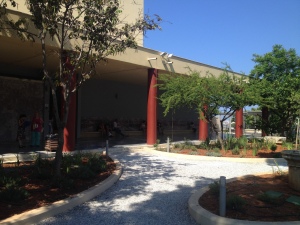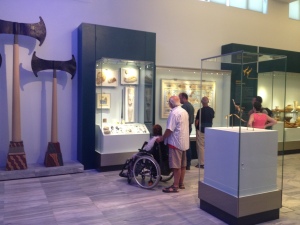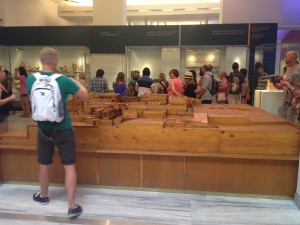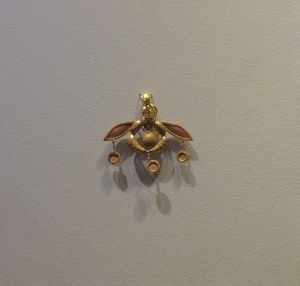The New & Improved Heraklion Archaeological Museum

Heraklion Archaeological Museum located at Xanthoudidou Street 1, Heraklion 712 02
In the Summer of 2012, I made my first trip to Crete. I was so excited to finally see the land of the Minoans, the oldest civilization in Europe and a civilization who’s history inspired me to become an archaeologist and heritage manager. I could hardly wait to see the Phaistos Disk, Kamares ware pottery, the bull shaped rhyton, and the Aghia Triada sarcophagus. To my dismay, the museum had been closed for renovation (for over 5 years at the time!) but the more famous artifacts had been moved to a very small temporary exhibit down the street. While I did get to see my favorite artifacts, the experience was lacking the other 99% of Minoan finds that have been discovered! It was unknown as to when the new and improved museum was going to open, but I was willing to wait…
Now in the Summer of 2014, I am back in Crete again and had the pleasure of seeing the brand new Heraklion Archaeological Museum. After nearly 7 years of rebuilding and renovations, Crete can now claim that the renovated Museum has nothing to envy from the other modern museums of European metropolises. From the Neolithic Age to the Roman times, the collection of the Museum covers 5,500 years of history. It is the greatest collection of art and relics of the Minoan Civilization in the world!
Having only just opened on the 6th of May, the Museum is already attracting an enormous amount of tourism. It exhibits 5,865 artifacts (not including the coin collection) in chronological order spanning nearly 15 rooms across two floors. Even some brand new artifacts that have not even been published yet are on public display! Although those artifacts are not allowed to be photographed, everything else is (sans flash). The famous highlights of the museum are ideally displayed in protective cases with exemplary lighting and informational panels. Originally, only the Bull Leapers and Prince of Lilies frescoes were apart of the temporary exhibition, but now, the even more spectacular artworks from the Palace of Knossos are back on display in the upper floor’s fresco gallery. My favorite fresco, The Blue Ladies, is back home in Crete after many years at the Metropolitan Museum in New York!
The Museum also displays some of their exhibits in innovational and educational ways. For instance, the larnax and burial pithoi are shown with the bones of the deceased still inside them. A giant reconstruction conveying the Palace of Knossos is displayed, not in a glass enclosure, but assembled of wood that fills almost the entirety of the room.
 The Museum itself has seen its own heritage in the making over the last three decades. While constructing the Museum’s courtyard, remnants of a fountain, cistern, and pillared building were found destroyed most likely due to cannon fire during the siege of the Ottomans. A skeleton of a man was revealed under the ruins of a door among Venetian coins and bronze rings. Since the site was used as an open fort battery during the siege, many skeletons like this man’s were found in the area and are now forever immortalized as the last defenders of the city from capitulation by the Ottomans. You can’t dig an inch any where in Greece without stumbling upon some fantastic historical heritage!
The Museum itself has seen its own heritage in the making over the last three decades. While constructing the Museum’s courtyard, remnants of a fountain, cistern, and pillared building were found destroyed most likely due to cannon fire during the siege of the Ottomans. A skeleton of a man was revealed under the ruins of a door among Venetian coins and bronze rings. Since the site was used as an open fort battery during the siege, many skeletons like this man’s were found in the area and are now forever immortalized as the last defenders of the city from capitulation by the Ottomans. You can’t dig an inch any where in Greece without stumbling upon some fantastic historical heritage!
The Museum is placed in the heart of the city and is also conveniently located en route from the Palace of Knossos by public transit. Check the Ministry of Culture website for ticket prices and operating hours. According to TripAdvisor, it’s the #3 attraction to see in Heraklion, and that is expected to go up as more and more people make their way to the new facility. Check it out for yourself and I dare you to leave feeling disappointed!
Brittany Wade is the editor of the Initiative for Heritage Conservancy blog and student of the MA in Heritage Management 2013/2014. Having studied Classics in her undergraduate, Brittany is interested in applying her knowledge of history in the field of archaeology and heritage management. Her interests are mainly in Prehistoric Minoan and Hellenic history.














